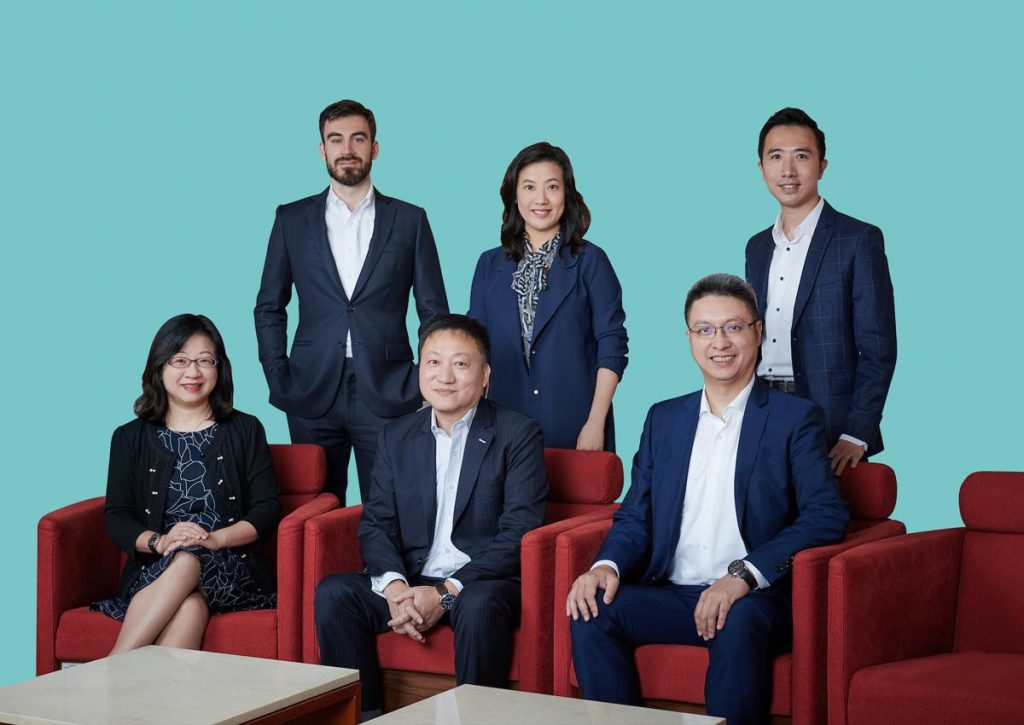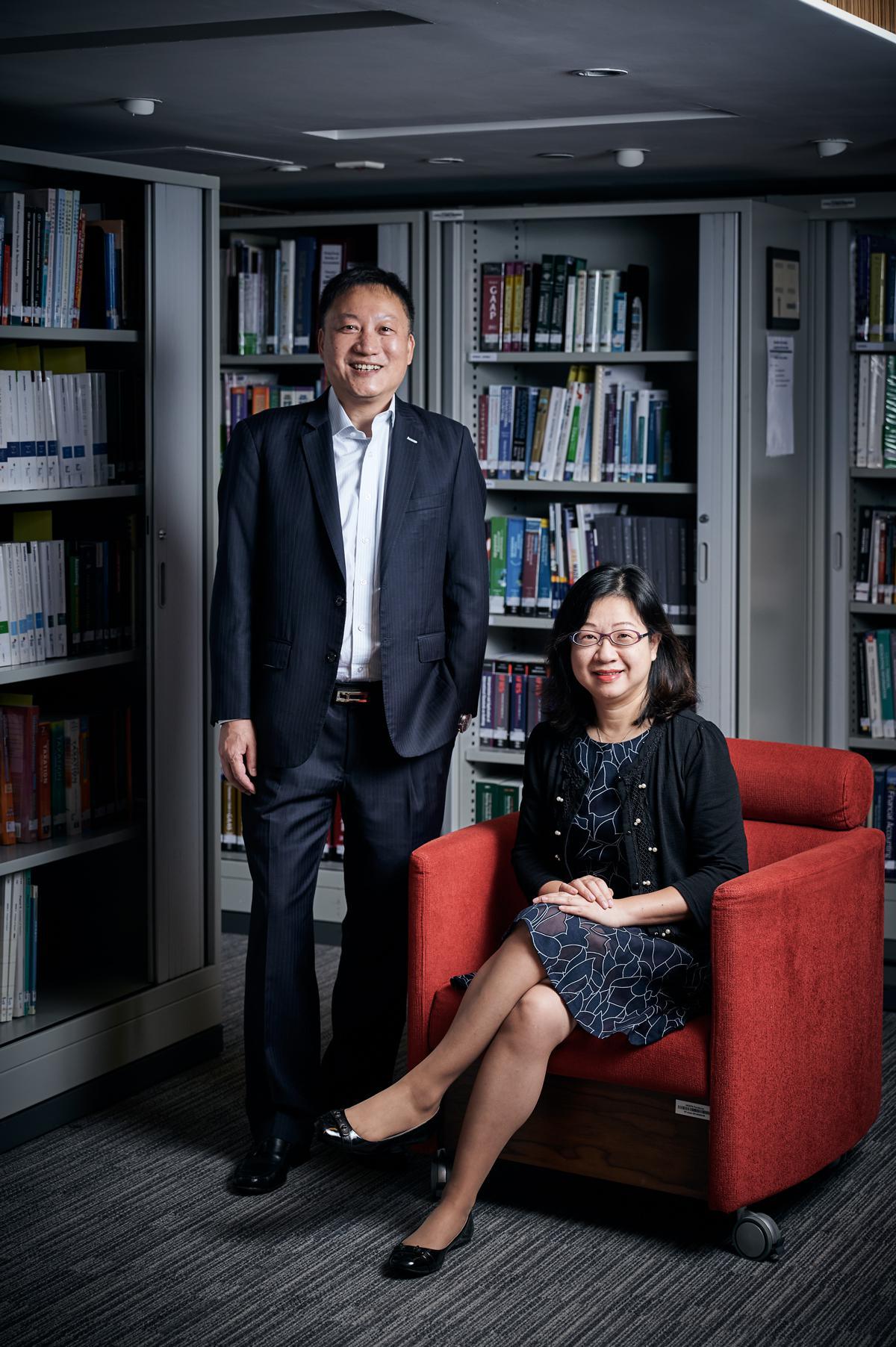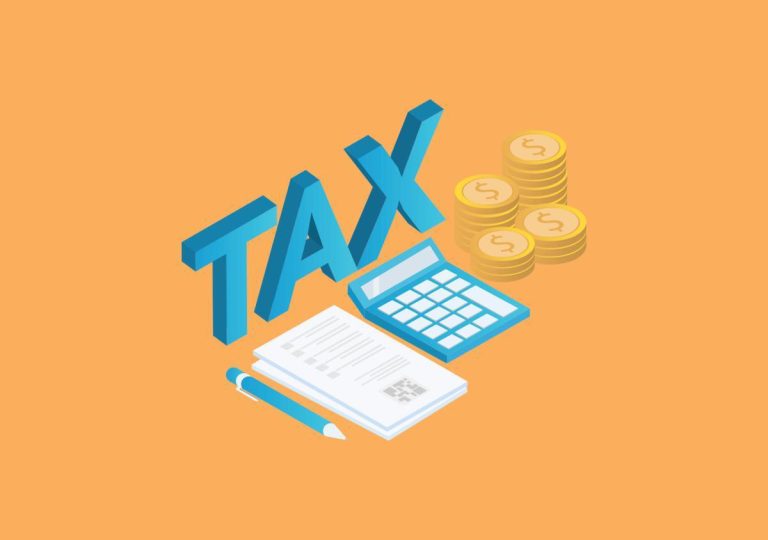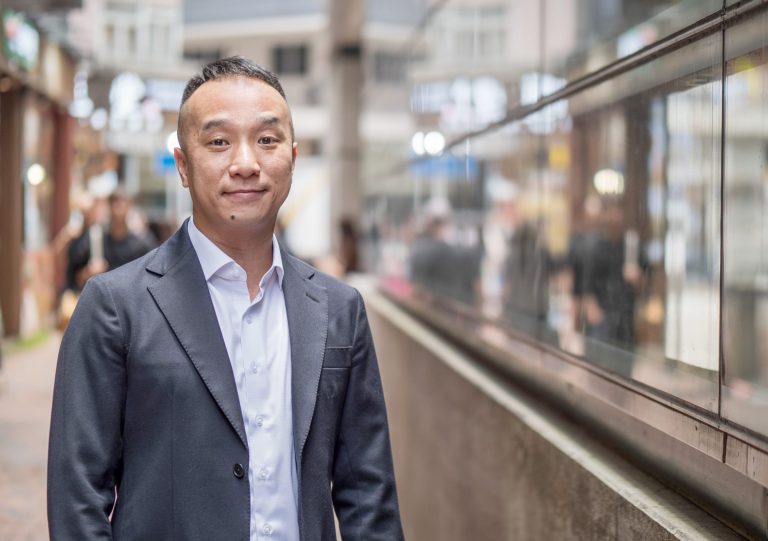While this year’s China Taxation Conference was a more low-key affair, held as a webinar, it was still well-attended and the presentations and discussions remained insightful.
The roundtable panel discussion featured a case study (see sidebar below) about a multinational group engaged in research and development (R&D) and sales across multiple jurisdictions and subsidiaries, including one in the Mainland. The holding company and the subsidiaries have a long-standing cost sharing agreement (CSA) to share the R&D cost of the company’s flagship software according to the sales in each jurisdiction. The Mainland subsidiary has been asked to perform a self-evaluation on its tax filing positions by the tax authority (TA).
Speakers: (Top row, from left) Andrew Fennell, Senior Director, Asia-Pacific Sovereign Ratings, Fitch Ratings, Cecilia Lee, Partner, Transfer Pricing Services, PwC, Travis Lee, China Tax Director, KPMG (Bottom row, from left) Sarah Chan, Partner, Tax and Business Advisory Services, Deloitte China, William Chan, Partner, Grant Thornton Tax Services, Andy Leung, Tax Partner, Indirect Tax, EY
Cost sharing
William Chan, Chairman of the Institute’s Taxation Faculty Executive Committee, Partner at Grant Thornton Tax Services, and moderator of the panel, began by noting that CSAs were very common for groups with cross-border R&D and sales. He asked panellist Cecilia Lee, Partner, Transfer Pricing Services, PwC, how the Chinese tax authorities would look at CSA arrangements in general.
Cecilia Lee replied that CSAs are not new in the China tax system. “The original objective of having a CSA is to encourage people to engage in more activities in intangible assets, or intellectual property (IP), such as R&D, activities which require labour services,” she said. “When labour services are involved, the TA may argue that the arms’ length principle applies.”
The fundamental rules for allocating the cost among entities would be based on the reasonably anticipated benefit, which may reference the projected income of the project, Cecilia Lee says. There are benefits to coming to agreement with the TA. “It is a blessing if you manage to agree on the appropriate tax treatment for cost sharing. But if the TA doesn’t agree to that tax treatment, they may regard that as a royalty payment, and withholding tax kicks in,” she highlighted. Finally, another benefit of getting an agreement with the TA on the CSA treatment is that the quantum of the payment can fluctuate. However, William Chan pointed out that it may not be easy to quantify the reasonably anticipated benefit.
William Chan (left), Partner, Grant Thornton Tax Services and Sarah Chan (right), Partner, Tax and Business Advisory Services, Deloitte China.
Interaction with income tax
William Chan then discussed the corporate income tax (CIT) implication if a CSA payment is regarded as a royalty by the TA. He asked Sarah Chan, Deputy Chairman of the Taxation Faculty Executive Committee and Partner, Tax and Business Advisory Services, Deloitte China, how such a case would be handled.
She advised that “when looking at CIT deductions, the questions are ‘why should the activity be performed outside China and how critical is the activity to the Mainland subsidiary?’ and ‘is the level of reward in line with the activity performed?’ The matching concept applies.” She concluded that the TA would allow deductions based on the totality of facts nowadays. Whereas, in the past the TA may let you claim the deduction as long as you present a service agreement to them.
This imposed restrictions on companies said William Chan. “This could mean that it is rather inflexible. Say if I subcontract certain activities to overseas group companies because I don’t have capacity to handle them, does it make the expenses non-deductible?” he asked.
“Enterprises need to know what their peers are doing. You may not be able to defend your position by just telling the authority what you are doing to justify the deduction nowadays.”
Sarah Chan had seen a lot of multinationals use that as a defence. “The TA accepts companies’ argument that ‘we centralize certain functions for better efficiency, rather than maintaining a small team in China for the function.’” But, she said that TAs may challenge companies if they are creating intangible assets based on accumulated local knowledge.
Cecilia Lee said that the TA had become very sophisticated in their tax investigations. “When they examine expenses they might do third-party benchmarking, using data from other enterprises or they might even get quotations from a service company, to determine whether it is really necessary to use head office functions,” she noted. Travis Lee, member of the Taxation Faculty China Tax Sub-committee, and China Tax Director, KPMG echoed this. “Unlike in the past where they may accept the one-sided explanation of a company, now they might undertake third-party benchmarking, before agreeing to the taxpayer’s assertion,” he said.
Sarah Chan agreed. “Enterprises need to know what their peers are doing. You may not be able to defend your position by just telling the authority what you are doing to justify the deduction nowadays.”
VAT troubles
Sarah Chan questioned how value-added tax (VAT) works in transfer pricing (TP).
Andy Leung, Tax Partner, Indirect Tax, EY Hong Kong, highlighted that CSAs can be tricky from a VAT perspective. “Assuming they can make outbound payment, will the payment be subject to VAT?” he asked. “VAT is imposed on taxable services. Is the activity performed under the CSA a service? Technically it is not.” Explaining cost sharing between a head office and a branch to the TA may be easier than explaining arrangements between a parent company and a local subsidiary. “Municipal tax authorities, which may not have the same level of sophistication as the state TA, may not be receptive to this idea,” he said.
For Travis Lee, issues can occur if there is a lot of uncertainty in the CSA. “I would suggest that the taxpayer talk to the TA in advance to try understand their interpretation of the arrangement. If a similar arrangement got an adverse ruling before, it might be difficult to get the transaction treated the way you want,” he said. He also pointed out the issue of multiple municipal tax authorities involved in a case. “If a transaction involved multiple locations within China, it might be difficult to entertain all the requests from all the authorities,” he noted.
Travis Lee cautioned enterprises to be mindful of how agreements with lower-level authorities might be viewed higher up. “If you have a very good relationship with the local tax bureau, you might consider that it shouldn’t be a problem to reach an agreement with them, but these deductions might be raised to the municipal tax bureau, which might scrutinize it further,” he said.
Reimbursement rather than provision
William Chan turned the focus onto whether the payments could be regarded as expenses rather than service fee. “For the reimbursement of expenses rather than service fee payment, do I need to withhold VAT? Is there any means that I can convince the TA that payment is expense reimbursement rather than service fee such that no VAT should be levied?”
The payment should theoretically be regarded as expense reimbursement. Andy Leung suggested that the company begin by clarifying with the TA that it’s a collection and payment, rather than a payment for services. “You need to explain the arrangement to the TA. If there is no precedent, you need to wait and see, but if the company needs to remit payment and cannot wait for clearance, paying VAT on a withholding basis as if the payment were a service fee and claim input tax credit is a quick fix. Yet, you could argue that the services were performed entirely outside of China such that no VAT should be levied, but this would require some technical analysis on the fact pattern,” he said.
“The burden of proof that all services were rendered outside China is on the taxpayer. Be prepared for the TA to come back and say ‘no’ if you cannot prove it.”
But, again, different local tax authorities may take different views on the nature of the payment. “The burden of proof that all services were rendered outside China is on the taxpayer. Be prepared for the TA to come back and say ‘no’ if you cannot prove it,” he warned. Andy Leung added good documentary evidences showing the services were rendered outside China is critical in reaching an agreement with the TA.
William Chan noted that under the company’s CSA, certain activities are performed in China. “This could be fatal to your argument that the payment is for all services rendered outside of China,” he said.
“This really induces complexity to the case. You may need to segregate the two parts for a clean case, i.e. one for services at the local level, and one for services outside China,” responded Andy Leung.
Permanent establishments
Sarah Chan commented that permanent establishments (PE) was another important consideration. “In the CSA, most cases would have R&D elements. Often the parent company would send in technical staff to set up the local R&D team. Physical presence of the foreign workers may create PEs in China,” she said.
Presenting the outbound payment as fee for services rendered entirely outside China could open a can of worms that the TA may counter that the fee was related to the PE in China, which could lead to additional CIT liabilities, she continued.
For William Chan, this really adds a complication to the CSA. “The TA let the local entity claim tax deductions, but CIT may still be payable by the PE.”
Sarah Chan had seen lots of cases of groups with CSAs. “It is important for them to appreciate that they may be difficult – particularly at the level of the local TAs.”
Cecilia Lee recommended that groups commission an independent report to document the expenses of different jurisdictions. “This could serve as a very good defence to justify on an allocation basis,” she said.
Corporate treasury centre
The group has a corporate treasury centre (CTC) in Hong Kong, which collects all payments in the region and charges a 5 percent fee. William Chan asked, what is the tax and foreign exchange implication of the revenue of the Mainland subsidiary and service fee charged by CTC?
For Andy Leung, the income nature would dictate the VAT consequence. Fees for IT support service and revenue for sales of software would attract VAT at 6 percent and 13 percent respectively. “The terms of the distribution agreement with the customers are critical to determine whether the revenue would be regarded as a service fee for IT support or revenue for sales of software by the Mainland subsidiary,” he said. The fact that the IP is co-owned creates additional VAT complications. Unlike many other jurisdictions, foreign companies at the moment cannot register only for VAT purposes in China. “If the agreement is badly worded and the TA considers all the group entities are collectively selling the license to the user, an adverse VAT outcome could result,” he noted. “It is critically important to identify who is doing what in order to negotiate with the TA.”
“The devil is in the details,” said Andy Leung. “You need to make it quite detailed, so that the TA will know the exact identity of the payment and not to re-characterize the payment in a certain way that would make it unfavourable to the taxpayer.”
Sarah Chan recommended looking at the CIT implications from a different angle. “According to the case, the Mainland subsidiary would receive 95 percent and the CTC would charge 5 percent for the services rendered. Setting aside whether the 5 percent is a justifiable amount for CIT, the difference may not be as drastic as VAT. No matter what income we are recognizing, we are still paying CIT at 25 percent,” she noted.
Travis Lee commented that according to the prevailing foreign exchange control regulation, every transaction should be recognized by itself. “In this case, the CTC is doing a netting which is not in line with the prevailing regulation,” he said. “There has been loosening of the rules recently, so the taxpayer may not need to go through the State Administration of Foreign Exchange to get the transaction done.” The operation of the Chinese entity may not be affected to such an extent nowadays.
William Chan summarized the discussion of the company’s operations as: “foreign exchange is a manageable problem, VAT could be a problem, but TP will always be a problem.”
About the case
A group is engaged in software development and distribution selling business-to-business software.
The holding company is an incorporated company in the United States, with subsidiaries in different jurisdictions that maintain their own research and development (R&D) teams. The holding company is also the R&D headquarters and works closely with the subsidiaries’ R&D teams.
The holding company and the overseas subsidiaries entered into a cost sharing agreement (CSA) in 2010. The R&D cost of the flagship software is shared among all these entities according to the sales of the local jurisdictions.
The intellectual property (IP) rights of the flagship software is co-owned by all these entities. The share was initially allocated to the entities in accordance with the turnover ratio projection and is adjusted when there are changes to the number of subsidiaries in the group, and only once a year after the accounting year end date. Changes are documented in an addendum to the CSA, with considerations for the change in the IP rights ownership put through in the intercompany balances. This is an internal process, though the group have documents to support changes, the group has not informed any external authorities about them.
The group does not sell software license rights to the users. Instead, users are charged on an annual subscription basis.
The group company in Hong Kong acts as the group corporate treasury centre (CTC) and all payments in the Asia-Pacific region made via the online payment gateway are collected by the Hong Kong subsidiary. For example, if the Internet Protocol address of a user is in China, the revenue collected would be classified as income to the China subsidiary. The CTC charges 5 percent of revenue collected as a service charge and remits the balance to the subsidiaries on a monthly basis.
An uneven recovery
The conference began with a presentation on Mainland China’s economy, and its uneven recovery from the COVID-19 pandemic.
Andrew Fennell, Senior Director, Asia-Pacific Sovereign Ratings, Fitch Ratings, started by pointing out that some parts of the economy were recovering very rapidly, but there are concerning signs about others. With the improving public health situation, the expectations would be that daily life would begin to return to normal. But he warned that it wasn’t that easy, and that the evidence is that a full recovery, to an economy similar to that before the pandemic, will be a lot slower.
The recovery is being driven by the policy-drive areas of the economy. “The industrial sector is very much leading the way. Looking at industrial production, there was a very sharp decline, but there has been a quite meaningful recovery,” he noted. Policy-driven fixed asset investment also showed resilience. He pointed to utilities and infrastructure as sectors that had recovered quicker and are going to benefit from announcements made at the National People’s Congress.
A surprising takeaway from the pandemic is how resilient the property sector has been. “The sector is very important for growth and the stability of the economy. Since the depths, this has recovered,” he said. While the market is not where it was in 2019, it has returned to 2018 levels.
“On the demand size, mortgage loans are growing roughly 20 percent per year. There still continues to be demand for residential property,” Fennell commented. “Developers, having taken a pause, are beginning to make investments,” he continued.
But to demonstrate that it is very much an uneven recovery, he pointed to the consumer sector.
Headline retail sales contracted by roughly 20 percent in February, and while they have picked up since, they are still below those of 2019. Drilling down, the data shows that people are still concerned about social distancing, and that sectors like restaurants and bars had experienced more severe contractions. “The public health situation has improved but people don’t have the full confidence to go out in the same way and engage in social activities,” he said.
On unemployment he pointed out that the official data suggested an urban unemployment of 6 percent, but was survey-based. “There are reasons to believe that many of the migrant workers, who serve a very important role in urban China, are not fully reflected in the statistics,” he commented. Fitch Ratings estimated that including some of these migrant workers who have lost their jobs or returned to the countryside for Chinese New Year and were unable to return to urban areas, “the urban unemployment rate could have been as high as 18 percent during the pandemic.”
Finally he turned to small- and medium-sized enterprises (SMEs), which account for around 80 percent of employment, and over half of gross domestic product, but are too small to be captured in official statistics. According to data from Tsinghua University, revenues were down 40 percent compared to 2019. “SMEs and consumers have borne the bulk of the shock during the pandemic. They also look to be the areas of the economy that are recovering more slowly,” he said.
“Because of this partial recovery, we do think the economy will grow at under 1 percent this year. Clearly unprecedented,” he said, before ending on an upbeat note. “We do have it recovering significantly in 2021.”


















